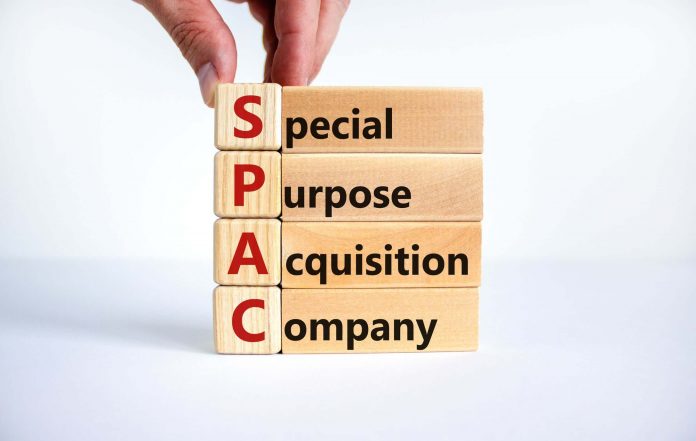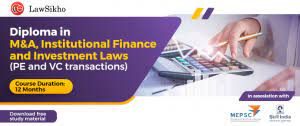This article is written by Sugandha Nagariya pursuing Diploma in M&A, Institutional Finance, and Investment Laws (PE and VC transactions) from LawSikho.
Table of Contents
What is a SPAC?
Imagine if someone famous is asking you to invest in their company without telling you “how they will be investing” or “on whom they will be investing your money”. And as it turns out there is no company ( it is just like a shell i.e. from outside it looks like a company, but from inside there is nothing which resembles it to a company), at least not yet, you are only placing your trust in a founder management team. So would you be willing to invest in that Company? And What is the purpose of this company?
This is the pitch made by owners of SPAC or Special Purpose Acquisition Companies. It is like someone with a good reputation giving you a blank cheque to just fill in the amount you are willing to invest in their company without even knowing how they are going to use that cheque.
That is why SPAC Companies are popularly known as “Blank Cheque Companies”.
So, in this article, we would learn about SPAC Companies and what legal challenges they face.
SPAC or a special purpose acquisition company is fundamentally a shell company with no business operations. This company aims to raise capital through an IPO route and fundamentally that capital is deployed to make acquisitions. Many market analysts are declaring 2021 as the year of a SPAC. Once a SPAC is publicly listed, the funds that SPAC raises remain in a trust, while SPAC keeps looking for acquisition targets which are usually private companies.
Management of the SPAC generally has a defined time period typically around 18 to 24 months to identify a target company, and once SPAC identifies these acquisition targets and completes the deal, the SPAC fundamentally doesn’t exist anymore and the newly combined company starts trading under the new name or symbol under the Exchange board.
If the SPAC is unable to make an acquisition during the defined time period then the trust or the SPAC will get dissolved and all the investment money that was collected gets returned to the investors. The investors have a voting right for and against the acquisition targets, and in the event the investors don’t like the acquisition target, they can redeem their investments.
Why would a company choose to go public through SPAC?
SPAC has various advantages over a traditional IPO, including the ability to provide companies with funding even when market volatility and other factors limit liquidity. SPACs may help reduce transaction expenses and shorten the time it takes to become a public business. So, some of the advantages of SPACs as compared to IPOs are as follows:
-
Time period
Due to a time limit that is to be adhered to by SPAC companies, SPAC mergers generally occur in 3 to 6 months on average, while an IPO usually completes in 12 to 18 months. Thus, if the company needs to go public within a short period, SPAC would be a great method.
-
Costs of marketing
SPAC mergers do not require the long process and formalities which a traditional IPO needs to fulfil. Like submitting growth projects, and recent earnings and finance documents to prospective investors. SPAC also uses an IPO roadshow to attract investors. SPAC simply lets a company go public by merging with a company that already exists and is just sitting on a mountain of cash to combine new business. Also in SPAC, we have to give a 2% underwriter fee and a 3.5% fee at completion, which is cheaper than an IPO.
-
Market price
The price of an IPO is determined by market conditions at the time of listing, whereas the price of a SPAC is negotiated before the transaction closes(generally 10 rupees), which is considerably more advantageous in a volatile market.
-
Additional capital
SPAC sponsors may also raise debt financing in addition to their original capital to not only cover the transaction but also to help the merged company grow. The backup debt and equity are intended to ensure that the deal is completed even if some SPAC investors redeem their shares. This option is not present in IPO funding.
-
Operational expertise
Since we know that SPAC sponsors are well-reputed and experienced people, thus they can use their network of contacts to provide managerial assistance or join the board of directors themselves.
How does the SPAC merger take place and what is the reason for falling share prices?
A SPAC merger starts with planning regarding the investment based on industry and geography-specific investing like in which company you have to invest in and where it is located. After the IPO, the proceeds of the IPO are placed in a trust account, and the SPAC normally has 18-24 months to find and consummate a merger with a target company.
Once a target firm has been found and a merger has been announced, the SPAC’s public shareholders have the option to vote for or against the merger and redeem their shares if they are against the merger. If SPAC requires more money, they can raise it by debt financing like private investment in public equity.
The transaction will conclude once shareholders accept the SPAC merger and all regulatory issues have been resolved, and the target business will become a public corporation.
SPAC shares retain their $10 nominal value at the time of the merger. When the merger happens, however, their true worth quickly decreases owing to dilution. Dilution occurs for all shareholders as a result of paying the sponsor’s fee in shares (known as the “promote,” which typically amounts to roughly 20% of the equity). Dilution results from the execution of warrants for individuals who do not hold them — all those who acquire shares on the secondary market.
Investors in SPAC IPOs are not looking for a long-term investment. According to research conducted by Stanford University’s Michael Klausner and New York University’s Michael Ohlrogge that included all SPAC IPOs from 2019 to mid-2020, nearly all IPO-stage shareholders depart before the merger. They are purchasing the IPO to receive a guaranteed share redemption return as well as a free warrant option with no opportunity cost.
Challenges faced because of low share price
There are various challenges faced by SPACs after the merger like, due to merger exchange ratios that favour the merger partner over the SPAC, post-merger returns to SPAC shareholders are low. One cause is sponsor incentives. Sponsors of SPACs stand to lose millions of dollars if the merger does not go through, but might gain tens of millions if it does. Sponsor incentives are to complete a merger, even if the conditions are adverse.
The amount of the SPAC’s consideration paid in the merger is a second cause for poor post-merger returns. According to the Klausner-Ohlrogge research, a nominal $10 per share has a real cash worth of less than $7 per share after accounting for various types of dilution from subsequent share issuances. Sellers will adjust their prices appropriately.
The post-merger firm must do phenomenally well for SPAC stockholders to gain large returns on merger pricing like that. Some do, but the majority do not.
Recent examples
Some anecdotal examples of companies that have gone public via SPAC are as follows:
Nicola as an example, we can see the period at 10$ before the acquisition was completed and then an insane spike in value up to a peak of 64$ and then down back to 11$ as of writing. The seemingly most successful SPAC in 2020 was a company called Quantum Scape, which was focused on technology and reached a peak value of 84$, and they are now down to 32$.
A brighter story is DraftKings which is a digital entertainment company that went from 10$ to 57$ and currently they seem to continue to grow.
Virgin Galactic also went public via SPAC, their stock went up 35% in 2020, reached the peak of 54 in February 2021 then crashed back down to 21$.
The aggregated data tell us that, of the 313 SPAC IPOs since the start of 2015, Renaissance capital analyzed 93 that had completed mergers and had taken a company public as of October 2020, of these common shares have delivered an average loss of 9.6% and a median return or loss of 29%compared to the average market return of 37% for traditional IPOs in the same period. Only 31% had positive returns as of that date.
Conclusion
The biggest SPAC on record raised 4 Billion dollars in July 2020 led by hedge fund manager Bill Ackman’s Pershing Square Tontine holdings. Thus, SPACs are gaining traction as a possible liquidity solution for many businesses. The SPAC merger process with a target business takes as little as three to four months to go public, which is much less time than a standard IPO approach.
They’re ideal for regular investors who wish to be a part of a process that is normally closed to them until far later in the process of becoming public.
Investors must, however, recognize the risks associated with SPACs to be successful. Individual investors have found SPAC investment to be less lucrative. Most SPACs underperform the stock market and eventually fall below their initial public offering (IPO) price. Most investors should be hesitant of investing in SPACs due to their poor track record unless they focus on pre-acquisition SPACs.
References
- https://www2.deloitte.com/us/en/pages/audit/articles/spac-risks-trends.html
- https://advisory.kpmg.us/articles/2021/why-choosing-spac-over-ipo.html
- https://economictimes.indiatimes.com/markets/stocks/news/are-spacs-a-really-good-thing-the-devil-lies-in-the-structure/articleshow/82013070.cms?from=mdr
- https://www.cnbc.com/2021/01/30/what-is-a-spac.html
- https://www.debevoise.com/insights/publications/2020/07/bill-ackman-and-pershing-square-launch-largest
- https://in.finance.yahoo.com/news/2020-spac-ipos-prominent-4-130101713.html#:~:text=In%202020%2C%20SPACs%20make%20up,IPO%20 size%20was%20%24337%20million
Students of Lawsikho courses regularly produce writing assignments and work on practical exercises as a part of their coursework and develop themselves in real-life practical skills.
LawSikho has created a telegram group for exchanging legal knowledge, referrals, and various opportunities. You can click on this link and join:
 Serato DJ Crack 2025Serato DJ PRO Crack
Serato DJ Crack 2025Serato DJ PRO Crack











 Allow notifications
Allow notifications



